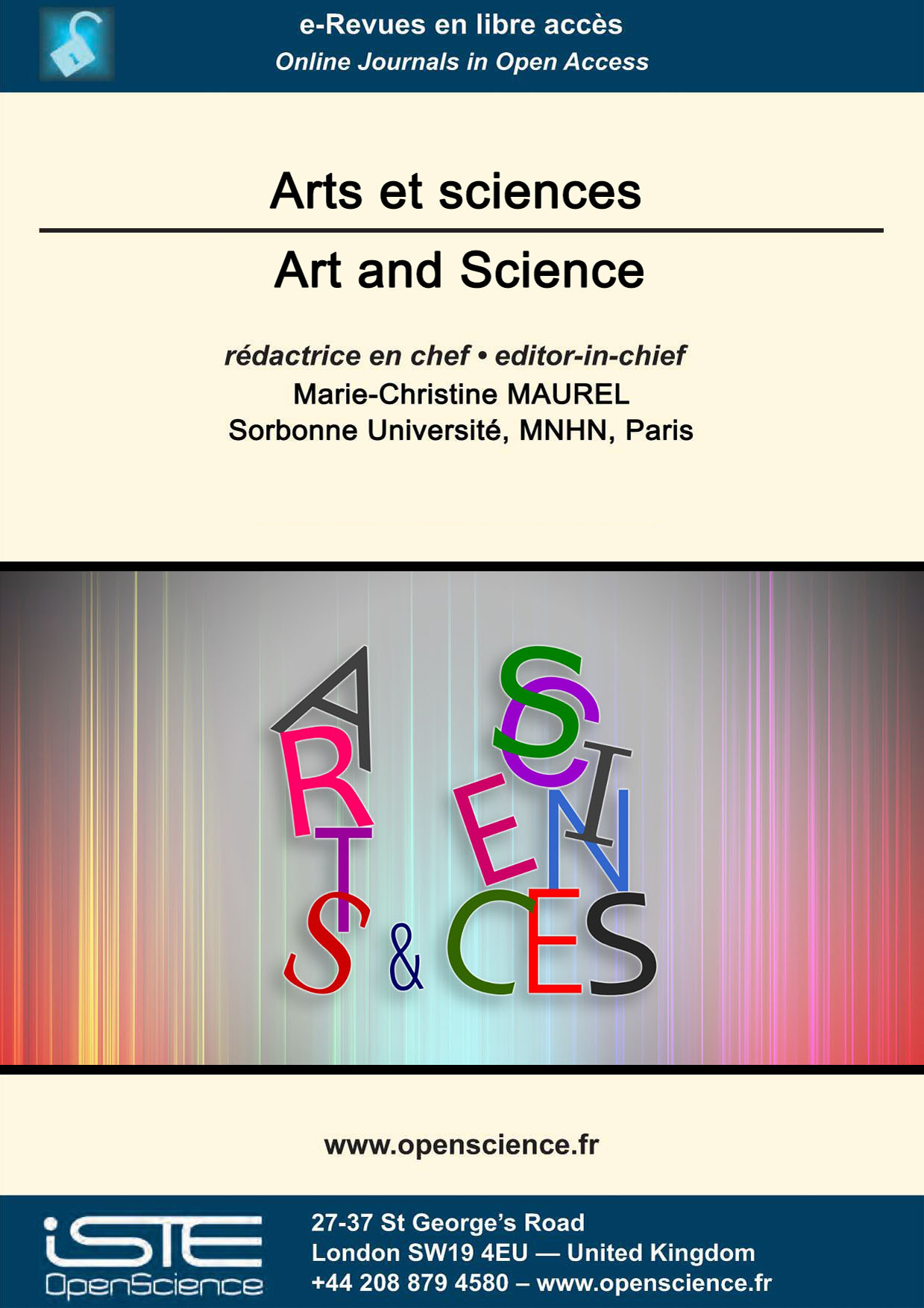

Social Sciences and Humanities > Home > Art and Science > Issue
Some categories of chemical reactions lead to the formation of solid and are able to produce surprising structures with special geometrical properties such as self-similarity. This paper deals with such structrures, emphasing their aesthetical features and gives more details about chemical gardens, generated by a precipitation reaction, revisited here in a confined geometry producing chemical paintings.
Are science and poetry in contradiction with each other? Looking for answers to this question, the author attempts to recount briefly the history of the changing relationship between science and poetry. Several aspects which link science and poetry such as the creation process, the poetical popularization of science which contributes to our constantly renewed vision of the world and the political commitment of both scientists and poets, are addressed. In conclusion the author underlines the probable causes of the distance between science and poetry and particulary points at the reactions and hopes that each discipline generates.
The Bamboo lemur program led by Helpsimus is based in southeast Madagascar, near Ranomafana National Park, within an unprotected and intensively cultivated area that is home to the largest wild population of greater bamboo lemur, Prolemur simus. Key elements are combined to guarantee its long-term success: scientific monitoring of the species, habitat protection, transfer of management responsibility to local communities, development aid for local
communities, support to children’s education. Our education component also includes environmental awareness. A “Simus Day” was created in 2013 and has since become the biggest annual festive event in the area where Helpsimus operates. During this day of celebration, the children of the 5 schools but also local bands from the villages with which we collaborate, are invited to perform dance, music and theatre play on greater bamboo lemurs and their protection.
We also work with a Malagasy painter who has created several frescoes on the greater bamboo lemurs in the primary schools supported by Helpsimus. Moreover, our education component is not restricted to Madagascar. Since 2015, it extends to several French schools located in small French cities. It begun with exchange of letters between schools which was soon followed by a support to Madagascan schools when the French children discovered the problems faced by their
new fellows in their daily life. The French children decided to collect various materials and organised fundraising events that contributed, in particular, to finance the opening of a school canteen. Then, they have created an original play about the connections they have built with the Malagasy children.
In France, we organised a couple of exhibitions with several artists: photographers and painters.
Finally, we are developing a craft project as a part of our ecotourism program including the production of an original bracelet from local seeds, imagined by a French designer.
The program Bamboo Lemur led to the emergence of various artistic performances and projects involving different people for the same goal the protection of a very rare lemur.
The internal geometry allows painters to organize the pictorial space to make it coherent and harmonious. But the internal geometry and the support on which it is plotted, do not appear in the painted work, neither in its radiographic image, nor in its infra-red image: The internal geometry remains secret. However, since the support is sometimes a square meshing or most often a harmonic meshing, the pictorial elements are quantified, the internal geometry becomes "discrete" and can be detected at the same time as its support. The study presented here concerns the search for the internal geometry of one of Georges de la Tour’s masterpieces: "The Apparition of the Angel at Saint Joseph" (Museum of Fine Arts of Nantes). This study helps to illustrate and confirm the methodology developed in our book dedicated to internal geometry. It is also an invitation to read this book, which we will sometimes refer to.

2024
Volume 24- 8
Special issue2023
Volume 23- 7
Issue 12022
Volume 22- 6
Issue 12021
Volume 21- 5
Issue 12020
Volume 20- 4
Special issue2019
Volume 19- 3
Issue 12018
Volume 18- 2
Issue 12017
Volume 17- 1
Issue 1